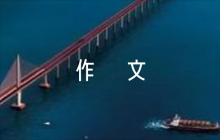【www.chinawenwang.com--英语作文】
引导应考者研究英汉两种语言的差异和相同点,找出英汉互译的规律,用以指导实践。“英语课堂上老师用英语授课,师生之间,同学之间用英语讨论问题。” 下面是范文网在线www.01hn.com小编整理的Fish bait, it is because the fish fell in love with the fisherman, it is willing to use life to Bo fisherman smile!,供大家参考!Fish bait, it is because the fish fell in love with the fisherman, it is willing to use life to Bo fisherman smile!
Fish trap
From Wikipedia, the free encyclopedia
For other uses, see Fish trap (disambiguation)
Traditional fish traps, Hà Tây, Vietnam.A fish trap is a trap used for fishing. Fish traps can have the form of a fishing weir or a lobster trap. Somefishing nets are also called fish traps, for example fyke nets.
A typical trap consists of a frame of thick steel wire in the shape of a heart, with chicken wire stretched around it. The mesh wraps around the frame and then tapers into the inside of the trap. When a fish swims inside through this opening, it cannot get out, as the chicken wire opening bends back into its original narrowness. In earlier times, traps were constructed of wood and fibre.
Contents
[hide]
· 1History
· 2Types and methods
· 3See also
· 4Notes
· 5References
· 6External links
History[edit]
Eel traps in England, 1899, byMyles Birket Foster
Traps are culturally almost universal and seem to have been independently invented many times. There are essentially two types of trap, a permanent or semi-permanent structure placed in a river or tidal area and bottle or pot trap that are usually, but not always baited to attract prey, and are periodically lifted out of the water.
The Mediterranean Sea, with an area of about of 2.5 million km2 (970,000 sq mi), is shaped according to the principle of a bottle trap. It is easy for fish from the Atlantic Ocean to swim into the Mediterranean through the narrow neck at Gibraltar, and difficult for them to find their way out. It has been described as "the largest fish trap in the world".[1]
The prehistoric Yaghan people who inhabited the Tierra Del Fuego area constructed stonework in shallow inlets that would effectively confine fish at low tide levels. Some of this extant stonework survives at Bahia Wulaia at the Bahia Wulaia Dome Middens archaeological site.[2]
In southern Italy, during the 17th century, a new fishing technique began to be used. The trabucco is an old fishing machine typical of the coast of Gargano protected as historical monuments by the homonym National Park. This giant trap, built in structural wood, is spread along the coast of southern Adriatic especially in the province of Foggia, in some areas of the Abruzzese coastlines and also in some parts of the coast of southernTyrrhenian Sea.
The Mediterranean sea has been described as the world's largest fish trap.
Indigenous Australians were, prior to European colonisation, most populous in Australia's better-watered areas such as theMurray-Darling river system of the south-east. Here, where water levels fluctuate seasonally, indigenous people constructed ingenious stone fish traps.[3] Most have been completely or partially destroyed. The largest and best-known are those on the Barwon River at Brewarrina, New South Wales, which are at least partly preserved.[4] The Brewarrina fish traps caught huge numbers of migratory native fish as the Barwon River rose in flood and then fell. In southern Victoria, indigenous people created an elaborate system of canals, some more than 2 km long. The purpose of these canals was to attract and catch eels, a fish of short coastal rivers (as opposed to rivers of the Murray-Darling system). The eels were caught by a variety of traps including stone walls constructed across canals with a net placed across an opening in the wall. Traps at different levels in the marsh came into operation as the water level rose and fell. Somewhat similar stone-wall traps were constructed by Native American Pit River people in north-eastern California.[5]
A technique called dam fishing is used by the Baka pygmies. This involves the construction of a temporary dam resulting in a drop in the water levels downstream— allowing fish to be easily collected.[6]
Also used in Chile, mainly in Chiloé, which were unusually abundant (fish weir and basket fish trap).
Types and methods[edit]
The manner in which fish traps are used depends on local conditions and the behaviour of the local fish. For example, a fish trap might be placed in shallow water near rocks where pikes like to lie. If placed correctly, traps can be very effective. It is usually not necessary to check the trap daily, since the fish remain alive inside the trap, relatively unhurt. Because of this, the trap also allows for the release of undersized fish as per fishing regulations.
本文来源:https://www.chinawenwang.com/zuowen/3346.html
文档为doc格式






 2024-01-03
2024-01-03 








